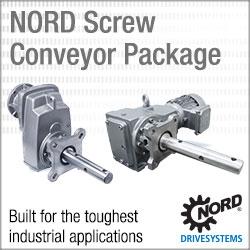AI algorithms can then process this data to provide insights that aid in decision-making, improving yields and reducing waste. As a result, agriculture businesses can save costs, increase productivity, and ultimately improve their bottom line.
 How Embedded Vision and Ai Are Revolutionizing Agriculture in India
How Embedded Vision and Ai Are Revolutionizing Agriculture in India

Q&A with Mr Maharajan Veerabahu, co-founder | e-con Systems
Can you explain the concept of embedded vision and its role in agriculture automation?
Embedded vision is a technology that utilizes camera-based systems to enable machines to "see" and analyze images in real-time. In agriculture automation, embedded vision is used in various equipment such as agricultural robots, drones, and autonomous tractors. These machines can perform tasks traditionally carried out by humans, such as picking, harvesting, planting, crop health assessment, pest detection, weed detection, watering, spreading fertilizer, land preparation, and soil analysis.
The camera acts as the "eye" of the equipment, capturing high-quality images of crops and vegetation, which are then analyzed using computer vision and AI algorithms. This analysis helps identify patterns and check for anomalies, providing the farmer with real-time data on crop health, terrains, and weather patterns.Embedded vision offers significant benefits in agriculture automation. It has enabled the agriculture industry to significantly cut down manual labor costs, accelerate the speed of operations, and increase profitability. With embedded vision, farmers can make informed decisions based on real-time data, resulting in improved crop yields, reduced costs, and increased efficiency.
What are the various applications of embedded vision in agricultural robotics?
Embedded vision technology has a number of applications in the field of agricultural robotics. One of the most significant uses of embedded vision is in picking, harvesting, and planting. With the help of cameras, robots can accurately identify the ripe fruits and vegetables, avoiding damage to the produce. Furthermore, the technology can be used for planting seeds, ensuring precise and accurate placements.
Another crucial application of embedded vision in agriculture is crop detection and assessment. The technology can help farmers identify diseases, pests, and other issues affecting their crops. It also provides farmers with essential information on crop growth, enabling them to make informed decisions regarding fertilizers, irrigation, and harvesting. Embedded vision technology also enables robots to detect weeds and pests, reducing the need for harmful pesticides and herbicides. Additionally, robots equipped with this technology can accurately detect the soil's moisture content, helping farmers determine the appropriate amount of water and fertilizer required for the crops.
Embedded vision technology can also help with land preparation and soil analysis. Farmers can use the technology to analyze soil quality, identify areas that require additional nutrients or treatments, and plan for optimal planting patterns. With these capabilities, embedded vision technology is becoming increasingly crucial for improving crop yields and reducing the impact of agriculture on the environment.
How have embedded vision and artificial intelligence enabled agriculture businesses of all sizes to significantly cut down manual labor costs while accelerating the speed of operations?
Embedded vision and artificial intelligence have revolutionized the agriculture industry by enabling businesses of all sizes to reduce manual labor costs while increasing efficiency. These technologies have facilitated the automation of tasks such as planting, harvesting, and sorting, which has resulted in faster and more accurate operations. With embedded vision, cameras and sensors can capture and analyze real-time data, allowing farmers to monitor crop growth, detect pests and diseases, and optimize irrigation and fertilization. AI algorithms can then process this data to provide insights that aid in decision-making, improving yields and reducing waste. As a result, agriculture businesses can save on labor costs, increase productivity, and ultimately improve their bottom line.
How do agricultural robots use cameras for tasks such as picking, harvesting, and planting?
Agricultural robots use cameras for a variety of tasks, including picking, harvesting, and planting. Cameras are mounted on the robot and used to identify and locate crops or individual plants. Computer vision algorithms are then used to analyze the images and determine which plants are ready to be harvested or which areas need to be seeded. Once the robot has identified the appropriate plants, it can use mechanical arms or other tools to perform the necessary tasks, such as picking or planting. The cameras allow the robot to work autonomously and efficiently, reducing the need for human labor and improving overall productivity.
Can you explain the role of cameras in crop detection and assessment, and how does measuring NDVI (Normalized Difference Vegetation Index) help in assessing crop growth, density, presence of water & soil, etc.?
Cameras are an essential component of crop detection and assessment. They can capture images of crops at different stages of growth, and the images can be analyzed to determine various factors such as crop density, health, presence of water, soil, etc. One common method of assessing crop growth is through the use of NDVI (Normalized Difference Vegetation Index) measurement. NDVI measures the difference between the reflectance of near-infrared light and visible light, which is an indicator of photosynthetic activity in plants. The higher the NDVI value, the more vigorous the vegetation. By analyzing NDVI data over time, farmers can monitor changes in crop health and identify areas that require attention, such as irrigation or fertilizer. This information can help optimize crop yield and improve overall farm productivity.
How do agricultural robots equipped with cameras help in land preparation and soil analysis, and what types of images are captured?
Agricultural robots equipped with cameras can help in land preparation and soil analysis by capturing various types of images, such as color images, near-infrared images, and thermal images. These images can be used to assess soil health, detect areas of nutrient deficiency or excess, and identify areas with high weed or pest pressure. The robots can also be equipped with sensors that measure soil moisture, pH levels, and other key soil characteristics. This information can then be used to create detailed maps of the field, which can be used to optimize crop planting and fertilization. By automating these tasks, agricultural robots can save time and labor costs while providing more accurate and consistent data for better decision-making.
Why is camera selection a crucial process in agricultural robots, and what factors should be considered when selecting a camera for agricultural applications?
The selection of a camera is a crucial process in agricultural robots as the camera is the primary sensor used for navigation, object detection, and data acquisition. The camera's selection depends on the specific agricultural application and the environmental conditions in which it will be used.
Several factors should be considered when selecting a camera for agricultural applications, including resolution, frame rate, field of view, sensitivity to light, dynamic range, and spectral range. The camera's durability, power consumption, and ease of integration with other sensors and processing units are also essential factors to consider. The camera's ability to function reliably in adverse environmental conditions, such as dust, moisture, and extreme temperatures, is critical to ensure consistent performance of the agricultural robot.
What advantage does e-con Systems have over other camera partners for agricultural robots?
At e-con Systems, we offer a range of high-quality cameras that are specifically designed for agricultural applications. Our cameras are designed to provide high-resolution imaging with advanced features such as low light sensitivity, high dynamic range, and thermal imaging capabilities. They are also ruggedized and can withstand harsh environments and weather conditions commonly found in agriculture. In addition to these, we also offer customizable camera solutions to meet specific needs of agricultural applications, ensuring that farmers and growers can select the best camera for their particular needs. This makes us a reliable and versatile partner for companies developing agricultural robots.

About Maharajan Veerabahu
Mr. Veerabahu is a passionate and accomplished professional with deep expertise in engineering solutions and developing new technology teams. He is the co-founder and Vice President of Product Design Services at e-con Systems, a leading OEM camera solutions provider with a global footprint.He has led e-con Systems from a bootstrapped start-up to a renowned brand with a client base of more than 300 brands, serving with the manpower of 350+ employees.
The content & opinions in this article are the author’s and do not necessarily represent the views of AgriTechTomorrow
Comments (0)
This post does not have any comments. Be the first to leave a comment below.
Featured Product

